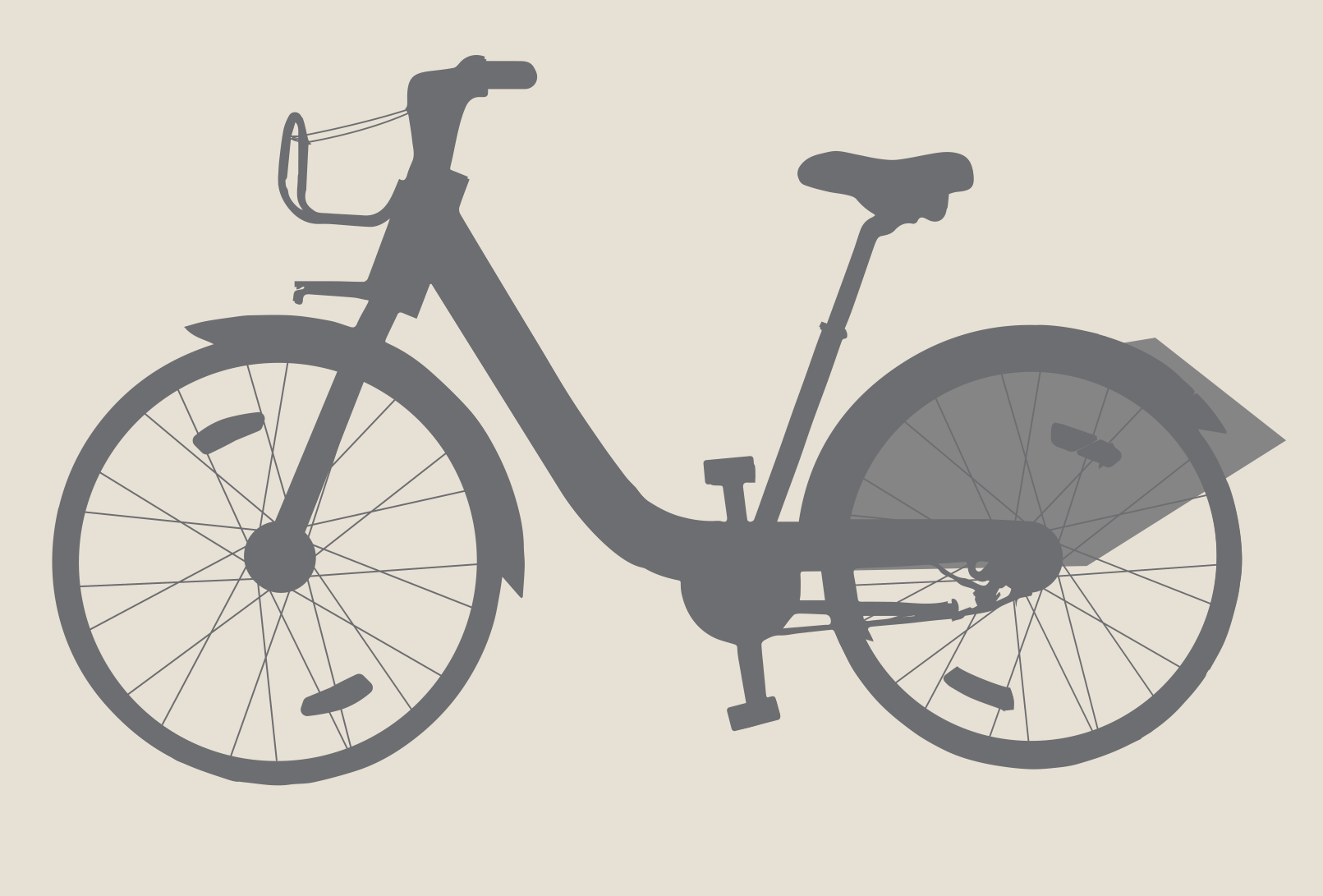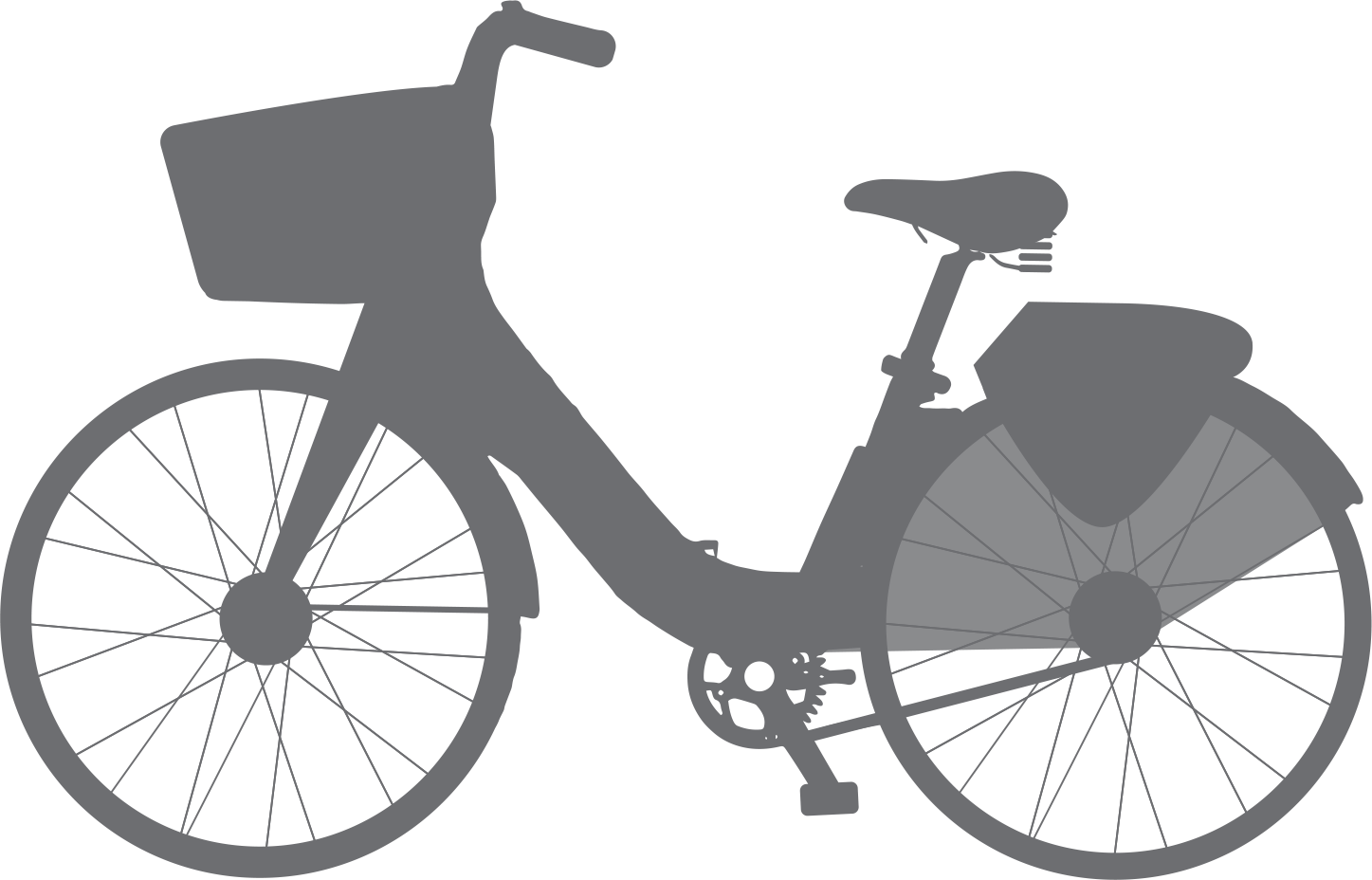Modern bikeshare systems are typically based on a standardized bicycle with specially
designed or proprietary components built solely for the system. This ensures durability and
security so that the parts cannot be easily stolen and/or resold. The appearance of the bicycle
is a key element in the overall branding of a bikeshare system and the bike should project a
sleek, modern image (see section 5.1: Communications and Marketing). Distinctive colors,
frame style, molding, and graphics can differentiate the bikeshare fleet from other bicycles in
the city. Bikeshare bikes, because they are often used by commuters, also usually have
mudguards and chain covers to protect the rider’s clothing.
System planners need to establish minimum guidelines for bicycles. The following are some
desirable characteristics:
One-size-fits-all
A bikeshare system usually offers one size and style of bike. The bicycle should be comfortable
for most users (and should allow for adjustments to the seat height but no ability to remove
the seat), but since there is only one size, it will not be adequate for every single user. The city
should estimate the average user height and make a recommendation based on that. A step-
through frame with long seat post can easily accommodate a wide variety of heights, and is
easier to mount for riders wearing skirts or dresses.
Robust
A bikeshare bike has a much higher frequency of use than personal bikes. As discussed in
subsection 3.1.1, four to eight trips per bike per day is typical. Bikeshare bikes should have an
average life-span of three to five years. Bikes built to operate for a year or two indicate that
the operator has minimized capital investment to deploy more bikes and capture market
share, and may incentivize complete replacement of broken bikes instead of maintaining and
repairing them.
Low-maintenance
Bicycles designed to require less maintenance (i.e., self-powered LED lights, non-puncture
airless tires, etc.) typically have lower operating costs and may enable more bikes to stay in
service at a time. However, low-maintenance bikes could provide a lower-quality ride, so a
balance should be struck between ride quality and maintenance needs.

Secure
To deter theft, the bikes in station-based systems must securely and easily lock into the docking space, and dockless bikes should be equipped with a sturdy wheel lock or built-in lock that attaches them to street furniture. Although it may pose added costs, proprietary tooling
that makes it difficult to remove and resell individual parts has become best practice for most bikeshare fleets. Mexico City’s Ecobici bikes feature a 20-inch front and 24-inch rear wheel, a unique design aimed at reducing theft and illegal resale. On-board GPS can also help to deter
theft (and/or aid in bike recovery).

Safe
The color of the bike, appropriate wheel reflectors, bells, brakes (fully enclosed roller or drum type for all-weather use), and front and rear lights for night riding (powered with a dynamo hub or using solar power) all must be considered, and must meet local standards for bike safety.
Identifiable
Each bike should have a human-readable unique ID. All bikes should be clearly marked with the system or operator’s name and customer service phone number.
Include storage
A front basket is usually preferred to a rear rack to help users
carry their belongings.

Many shared-bike designs avoid rear racks to discourage a second person riding on the back or carrying excessively heavy loads, both of which can lead to extra wear and tear as well as safety concerns.
Bikes require ongoing maintenance, both in terms of prevention and new parts. The four major points of maintenance on bicycles are:
- Tires
Tube changes, regular inflation, tread wear - Brakes
Regular adjustments, replacement when worn - Drivetrains
Lubrication, adjustment due to chain and shift cable stretch - Lighting
Regular checks
However, new technologies are continually being developed to address these problems and
minimize the need for consistent maintenance. Almost all bikeshare bikes now include
enclosed all-weather drum or roller brakes. Dockless bikeshare operator Mobike uses airless
tires with no inflatable inner tube and a chainless shaft drive for its bikes in some cities, both
of which are intended to reduce regular maintenance needs.[35]
4.5.1 TYPES OF BIKESHARE BIKES
TRADITIONAL BIKES

DOCKLESS BIKES
Dockless bike designs typically include the features identified above, but may have additional parts not necessary for bikes used in a station-based system.
